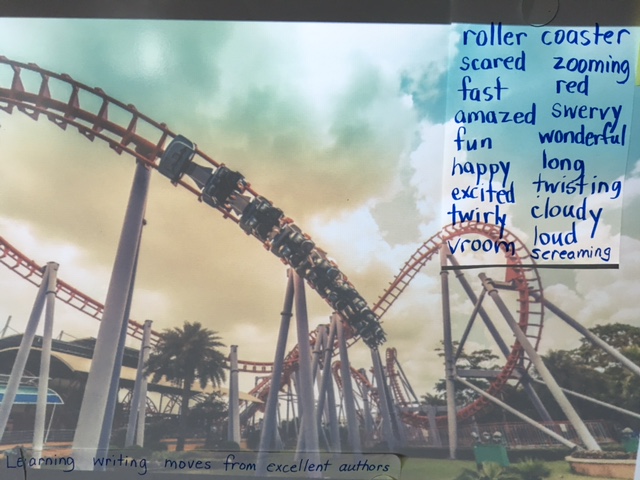Yes, I am really posting my Five for Friday on a Friday!!! I've not been blogging lately because I've been so
Anyway...Thanks as always to Doodle Bugs Teaching for hosting this fun linky party. I love reading about what everyone is up to.
I've been feeling good about my writing instruction lately. That hasn't always been true this year. We've been working on writing stronger narratives. One of the areas my students have difficulty with is stretching their stories by adding relevant details. They basically try to stretch the story by adding more words. Usually the same words. So, I end up with stories like this:
We played outside. We had fun. We played zombie tag.
It was so fun. I won. I had a lot of fun.
Shoot me now.
So, I've been trying to help the kids find ways to stretch their stories in more interesting ways.
I decided to start Quick Write Fridays to work on using descriptive details. First, I project a stock photo on the board. Here's the one we did today.
We spend a couple of minutes brainstorming words that we could use to describe what's happening in the picture. I post that on the board beside (on top of, really) the picture.
Next, I give the kids 10 minutes to write. They can write a description, a story, a poem... Whatever the picture inspires them to do. Here are a few of the pieces my kids wrote.
Last week, we used this beautiful fall photo and I talked about trying to use our other senses in our imagination.
I love how this piece turned out.
We've only done the quick writes for two weeks, but I'm already seeing the impact on my student's writing. I'll keep this going until the end of the year. Next year, I'll start with it right away.
Field Day!
We had our field day a little early this year so it won't interfere with testing. It was a beautiful day. The kids had a blast and I enjoyed watching them compete in all the events.
I was lucky enough to see this on Tuesday night.
After field day, it made for a long day, but it was worth it!
Fraction Fun
We're working on our fractions unit. I had my kids play a fun game to explore making fractions of a group. They rolled number cubes and counted out that many cubes. Then, they had to see if they could group the cubes into halves, thirds, and fourths. They recorded their results on a chart they copied into their math journals. Fun!
I have to leave you with some great pictures from my Wildlife Kayak Tour last weekend. It was a beautiful afternoon.
That's it for this week.
Until next time,































